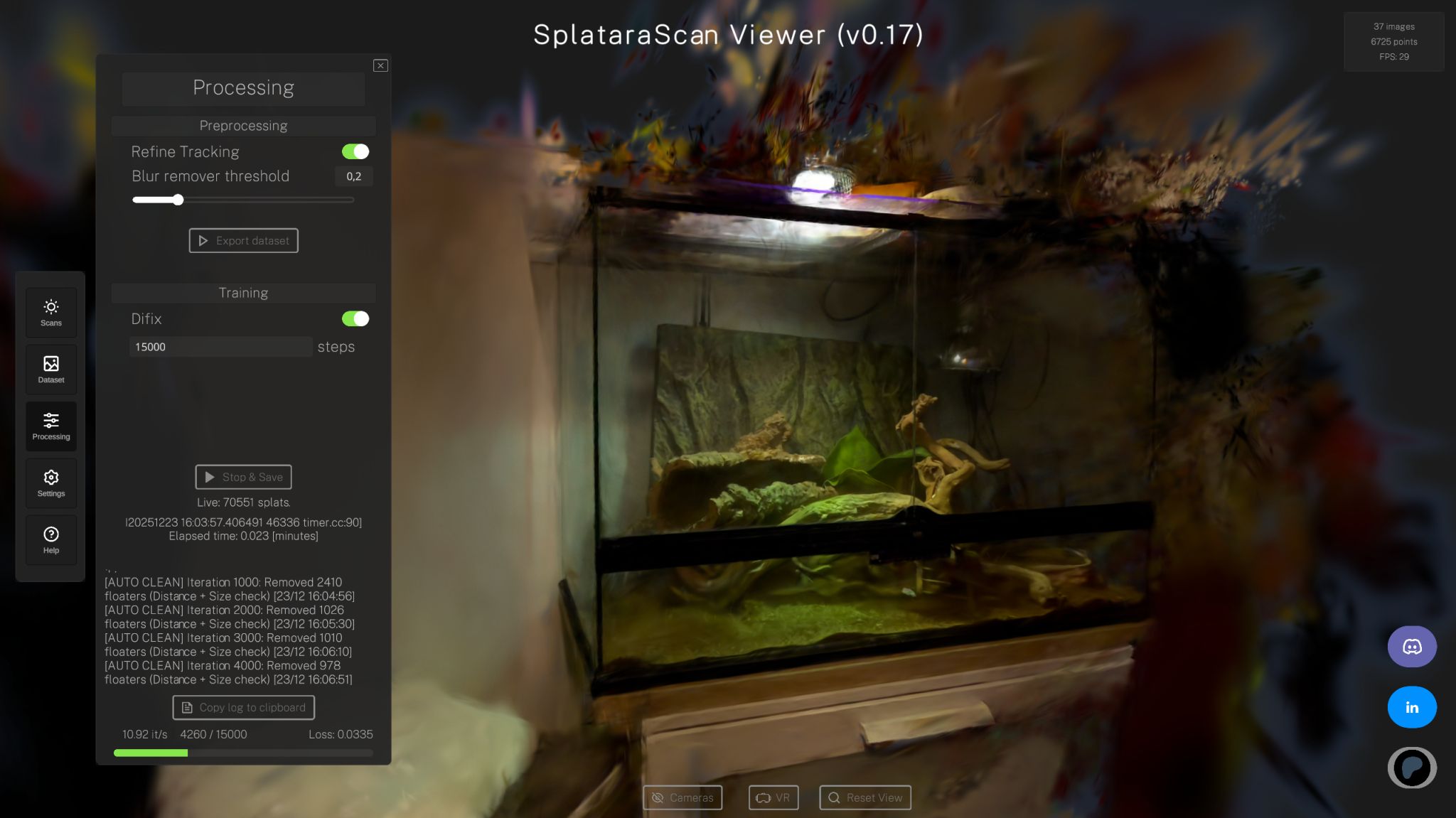
Michael Rubloff
Aug 26, 2025
The day is finally here. Nearly two years after its initial launch, Jawset's Postshot is coming out of beta and with it several features. Postshot, the local training platform for Gaussian Splatting, has officially launched version 1.0—marking its transition from an open beta into a more mature, professional grade tool. Alongside a new licensing structure, Postshot 1.0 introduces significant improvements to training performance, stability, import/export capabilities, and user interface responsiveness.
The most notable shift in 1.0 is the introduction of tiered plans. The Free plan remains available to all users and still supports unlimited training with images, videos, and model sizes. Users on the free tier can train and render in up to 4K resolution with 8-bit SDR color, export and import camera poses and points (in COLMAP and RealityScan formats), and continue experimenting with Radiance Fields, though saved files are only usable within the free tier.
The new Indie plan, priced at €17/month or €204/year, removes the watermark on renders and allows exporting Radiance Fields in PLY format. It also introduces a floating license model, meaning users can work across multiple devices, and saved files are compatible across any license tier. For creators rendering via Unreal Engine or After Effects, the Indie plan unlocks unlimited render node access.
For professional studios and high-end users, the Studio plan (€39/month or €468/year) adds support for high fidelity image workflows with EXR, TIF, DNG, and RAW formats, as well as HDR output at 16-bit and 32-bit precision. Studio users can render and train beyond 4K resolution, automate workflows with a command line interface, and take advantage of automatic scene alignment using AprilTags. The Studio plan also supports camera and point imports using BlockExchange format.
Postshot 1.0 makes noticeable strides in training reliability and performance. GPU memory usage is now more intelligently managed, with splat counts auto limited to avoid crashes, and workspace compaction allows training of larger models in constrained environments. Improvements also address noise issues at large focal lengths, laggy viewport rendering, and hanging during training when using large image sets. Training in non-sRGB color spaces now maintains model quality, and pausing/resuming sessions retains configuration correctly.
On the import side, Postshot now supports optional image mask imports, improved image mask handling, and expanded pose/point import options across mixed formats (BlocksExchange and PLY). COLMAP imports are more fault-tolerant—ignoring stray .txt or .bin files rather than failing—and the software now supports double-precision PLY data for higher fidelity.
AprilTags, previously added in a pre-release, are now fully integrated and automated in the Studio tier. This allows physical tag detection for aligning scenes directly within Postshot, streamlining workflows for creators using printed markers for orientation.
Exports now preserve anti-aliasing metadata in PLY files and offer a one click option to export entire COLMAP databases. Image exports attempt to retain original filenames where possible. The CLI has seen significant additions, including options for creating sky models, storing training context, cropping, and setting custom regions of interest. Importantly, a broken default profile behavior has been fixed, and filenames with non-ASCII characters are now handled correctly.
Across the board, the user interface has been made more stable and more responsive. Input lag issues, crashes during shutdown, and viewport freezes have been addressed. ALT+F4 and common navigation shortcuts now work as expected, and project files properly reflect changes such as relocating an image set. For users working in multilingual environments, font fallback now supports correct rendering of Japanese and Chinese characters.
Support for SpaceMouse input devices has also been added, offering 3D navigation for users with specialized hardware. Meanwhile, the viewport now auto-updates at a reduced rate during training (2FPS) to preserve performance without sacrificing real-time feedback.
The After Effects plugin received a stability fix for crashes during shutdown. For Unreal Engine users, the plugin now supports UE 5.6 and disables by default to prevent issues when packaging projects. Bugs related to CineCamera previews, depth rendering, and .PSHT file compatibility have been fixed.
The installer has also been hardened. It now handles command-line arguments properly, prompts users to quit other instances, and resolves edge cases that caused version mismatches or prevented installs under certain permissions.
Licenses are billed annually, and all tiers are subject to VAT based on checkout location. While some of these premium features are now gated, Postshot’s continued support for an unrestricted free plan ensures the platform remains accessible to newcomers and hobbyists.
Postshot remains Windows only and requires an NVIDIA GPU. The latest version can be downloaded from the official site







